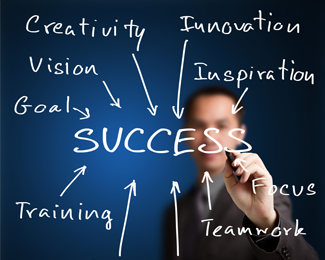Talent Management Solution
Strategic function of HR – Talent Management continues to be a major focus for CEOs, HR Leaders and Line Managers for sustainable and profitable growth. Talent Management includes a gamut of responsibilities like performance management, succession planning, competency management, develop compensation packages and leadership development where HR leaders work closely with both the senior management and line managers to add value. Traditional methods of maintaining details in excel is fast becoming obsolete as raw data today has no meaning in this competitive global economy. The key is to integrate these different functions to contribute in decisions linking operational and strategic visions & goals. Talent Management Software can aid in managerial decisions using computer based analytical tools.
Workforce Planning: The integral HRIS enables sharing of information w.r.t skills, experience, career path and their potential across the organization enabling departments to identify available talents.
Performance Management : The employee performance management module should be designed to have a process learning approach to measure and manage employees while empowering managers to play a significant consultative role in the process of ongoing talent development, career planning and retention of employees; thus creating a strong link between leadership and talent for translating desired behavior into value and at the same time motivates employees towards good performance and helps them understand the importance of their contribution driving overall productivity by breeding autonomy and accountability.
Competency Management: The competency library should allow having a set of easy to understand competency matrix emphasizing position/role fit which can be shared for employee assessment and evaluation, L&D, recruitment and succession planning for applying across the organization.
Succession Planning: The analytics should help in assessing available talent in a structured way uncovering both individual (performers, potentials and leaders) and organizational strength. Apart from this the ability to capture career aspirations should facilitate shared ownership and teamwork in skill development, defining competencies and benchmark expectations apart from planning road map for successors and future hire in-line with organization capabilities.
Employee Engagement: Several organizations are moving from one/two times reviews to continuous feedback & progressive assessments. Continuous feedback helps in better employee engagement, increased collaboration and trust between managers and their team members. The intuitive continuous feedback should link organizational culture and company value. This module should serve as an incident diary, employee hand holding, support & camaraderie, recognition & rewards and organizational announcements fostering an emotionally stimulating work environment and enriching work experience and lowering attrition.
Overcoming Transition Risk: The analytical tools should help access talent with a view to define competencies and to benchmark expectations, analyze skill gaps, plan employee development for bridging critical skill gaps and groom internal candidates for leadership positions & take proactive measures for retention of superior employees.
Ease of use: Modern talent management software should ideally encompass all the above modules and should be easy & simple to use. End of the day, you and me want to do our job quickly and easily and do not want to do a certification course in learning the tool.
Please visit: www.synergita.com Synergita is a winner of Microsoft Code for Honor & CODiE finalist for Best Human Capital / Talent Management Software. It is one of the most easy to use and flexible software, encompassing all the above qualities of a winning talent management software.

